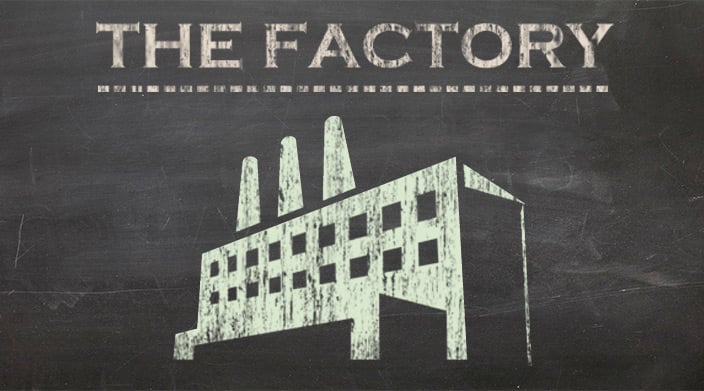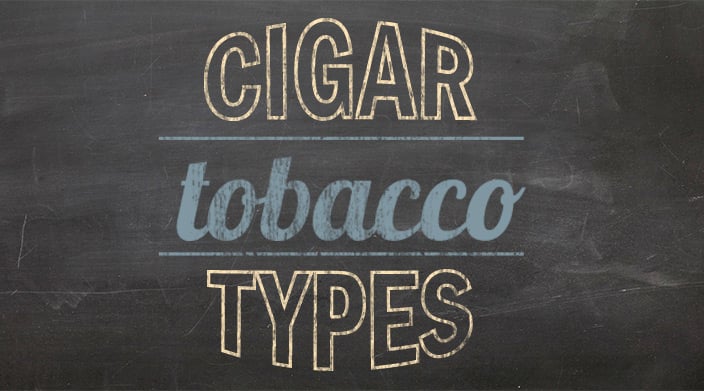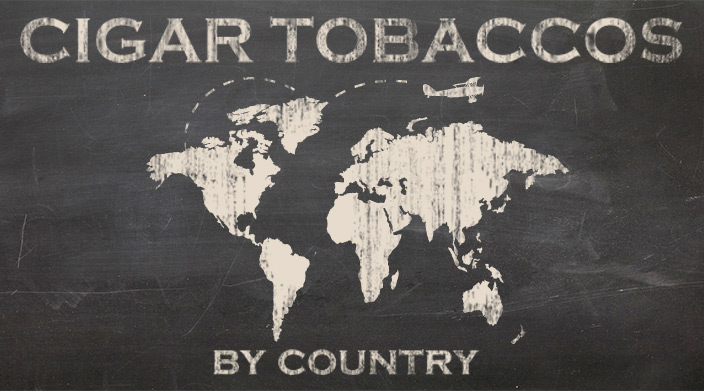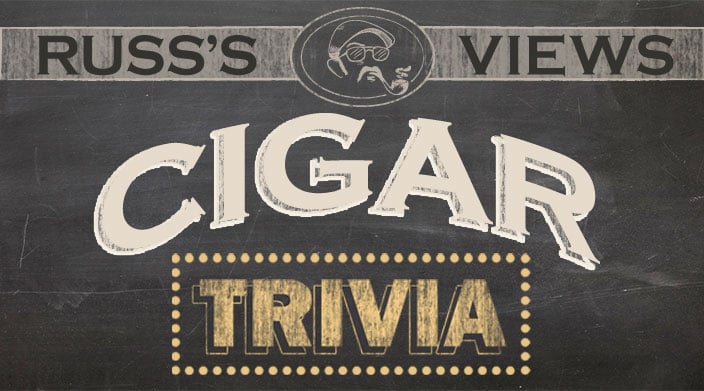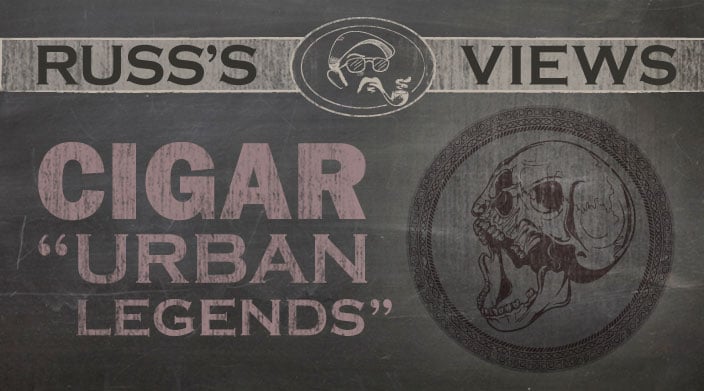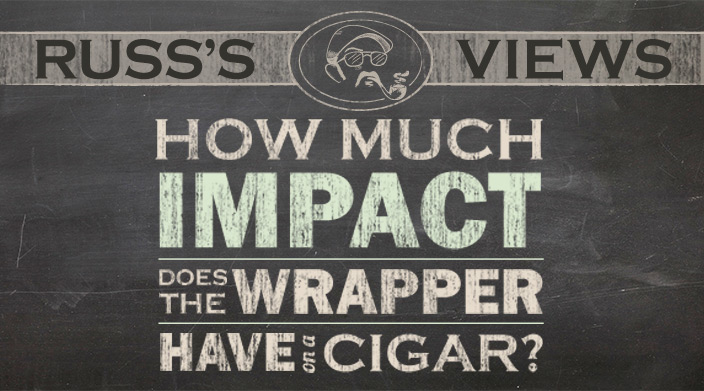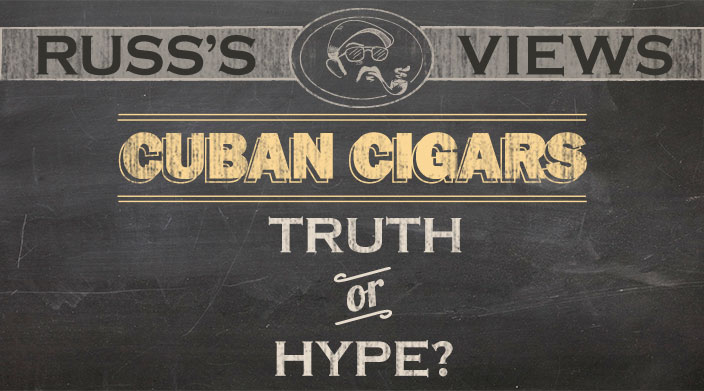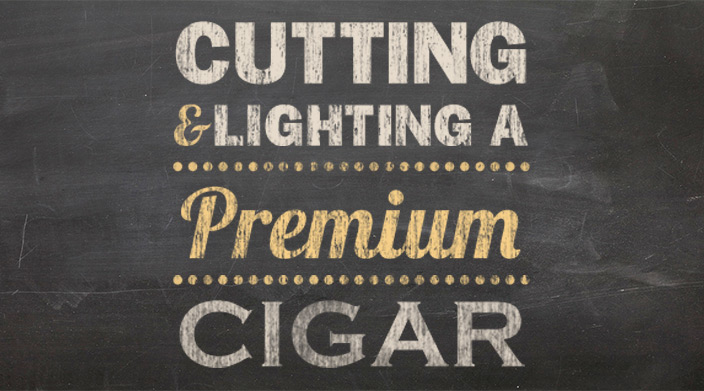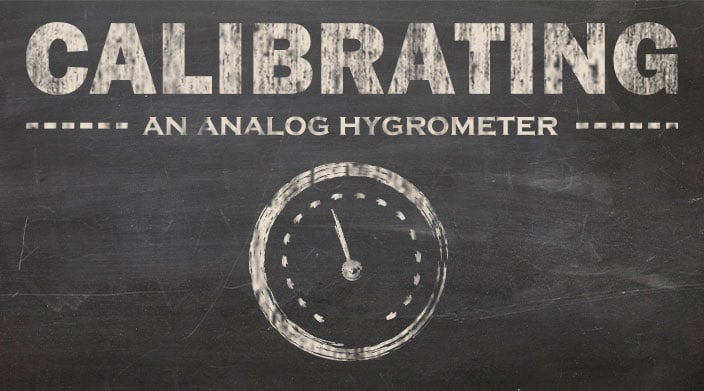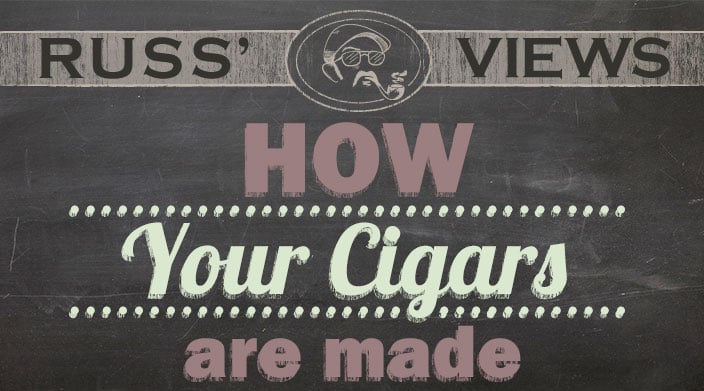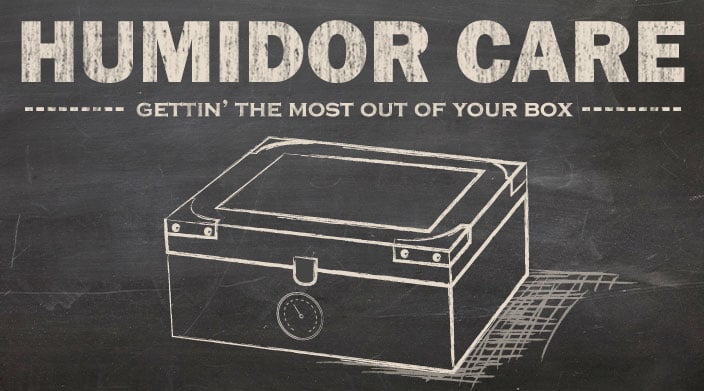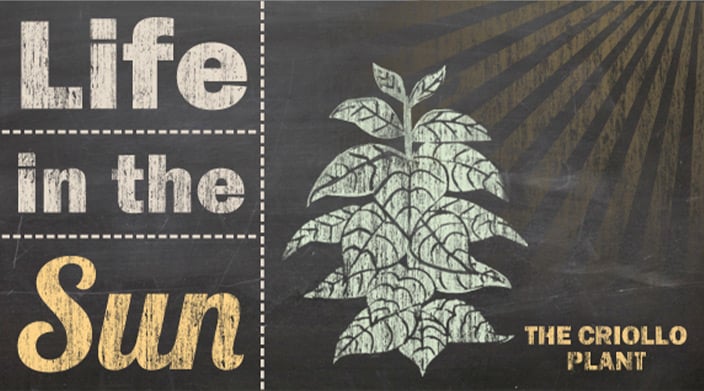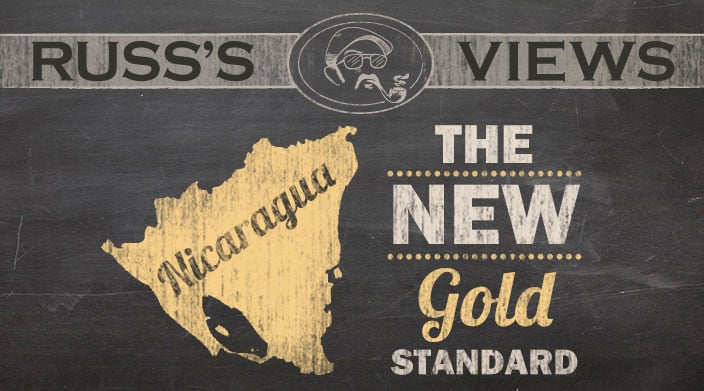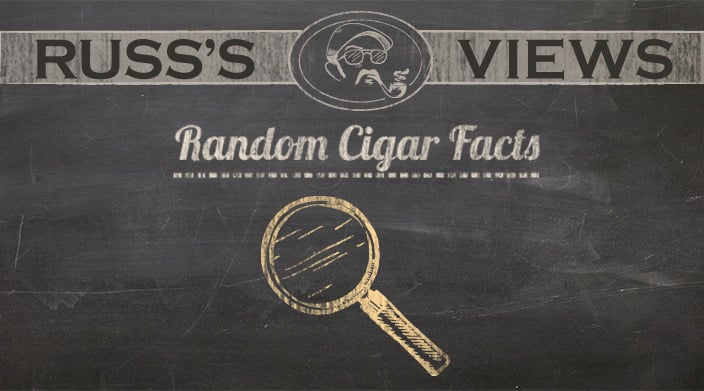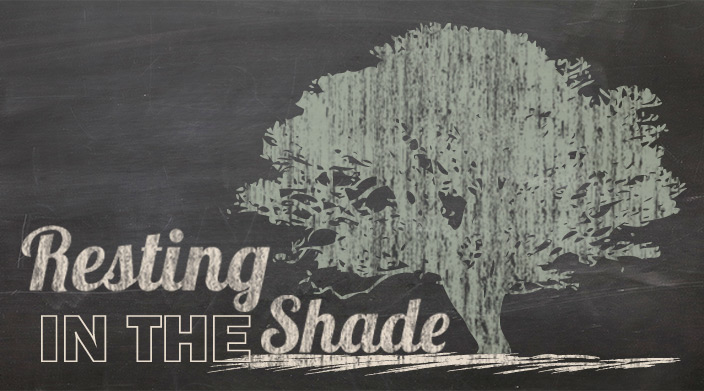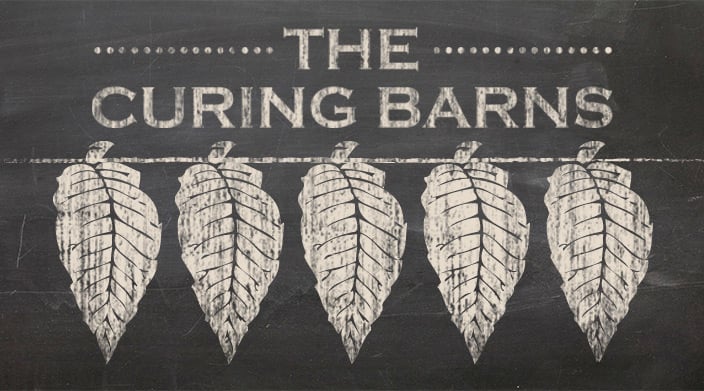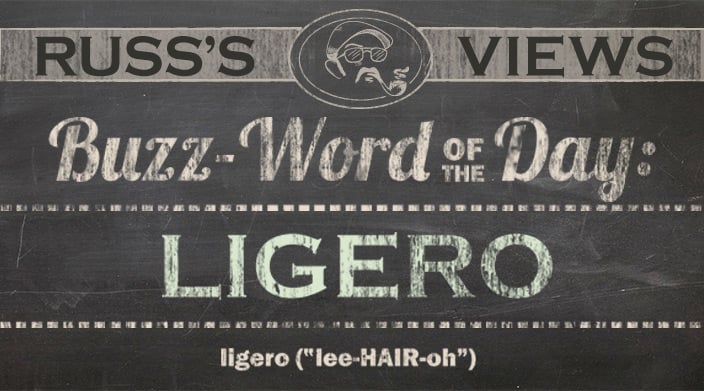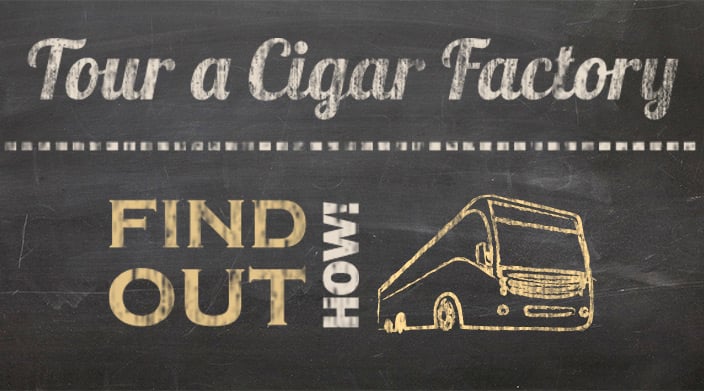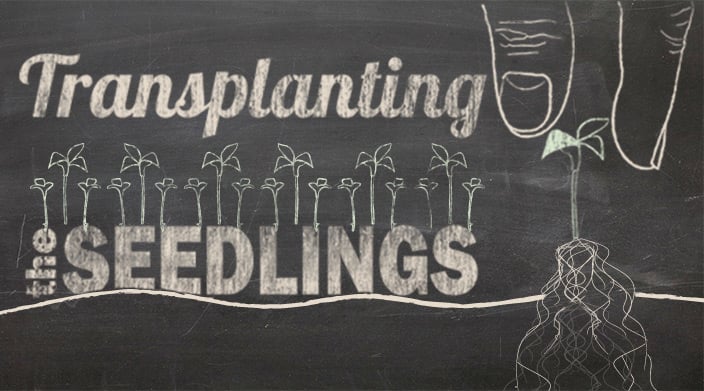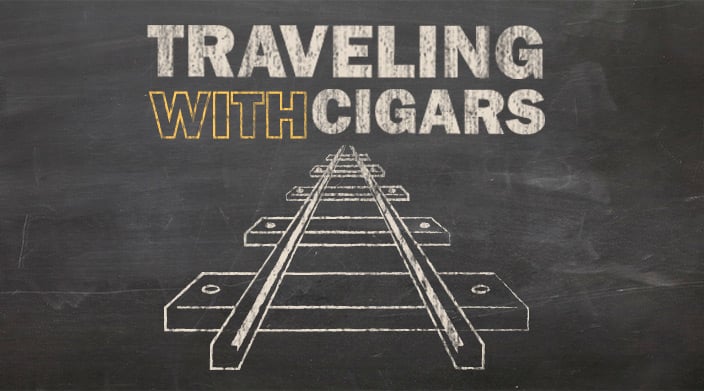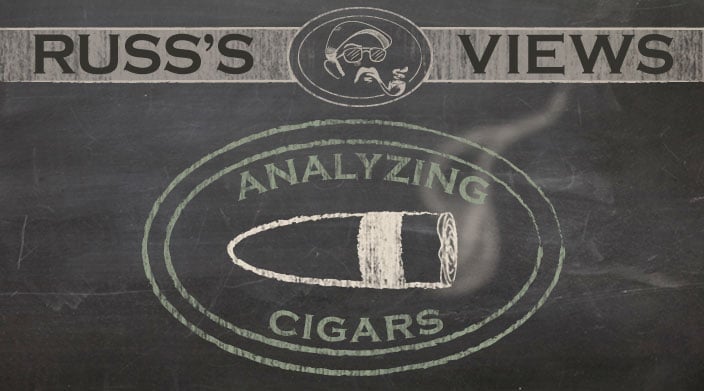The tobacco's first stop in the factory is in the escogida, or the grading room. The leaves have already been sorted by their type, and they are then sorted by their class (low quality, medium quality, high quality, etc.), and then by color. From there, they are tied in bundles of fifty, and begin the fermentation process. Unlike cigarette tobacco, which is just flue-cured, and then goes into making cigarettes in short order, cigar tobacco undergoes a process, which radically changes the chemical makeup and properties of the leaves. The leaves are put into cylindrical piles, called pilones, which are about three feet high. The leaves, which are not completely dry, have enough moisture in them, or will be exposed to enough moisture in the humid tropical climate, to undergo fermentation. This process, which lasts about 30 days, causes the leaves to assume a temperature of 95 degrees (35 C), and the temperature encourages the growth of bacteria that reduces the oiliness of the leaves, which causes the leaves to have a more uniform, but darker color. Care must be taken to ensure that the temperature does not rise above 95 degrees (35 C), because if it does, it will cause the leaves to become too dry, too dark, and will cause them to retain too much of their tars and nicotine.
After the first fermentation is complete, the leaves are moistened in two different ways. Wrapper leaves are moistened with regular water, while filler and binder are doused with a solution made up of shredded tobacco stems and water. During both of these processes, the leaves are not moistened too much, because too much moisture will cause the leaves to rot. The leaves are sorted once more, based on quality and whether or not they were properly fermented, and their stems are then ripped out, and they are sorted again based on size, color, texture, and type.
Then the leaves are bundled together again, and are put into even larger piles, called burros. To reach the high temperatures necessary for proper fermentation, these piles are stacked six feet high. They are exposed to a much higher temperature, usually 108 degrees (42 C), for a much longer period of time, which can be up to 60 days. The leaves on the outside are rotated with those on the inside to ensure even fermentation. This process is monitored even more closely than the first fermentation process, because if the middle of the burro goes above 108 degrees, the leaves become abnormally dark, and their flavor profile becomes radically different. Sometimes the leaves are exposed to higher temperatures for even longer periods of time. These leaves are typically wrapper leaves, and these wrapper leaves almost always are maduro (dark brown) or oscuro (black). Many oscuro wrappers produced for the US market use a process called “cooking,” where the fermenting leaves are placed as bundles in an oven that is heated to 120 degrees, creating a wrapper that is dark as night itself.
Each fermentation reduces the ammonia, tar, acidity, and nicotine content of the leaves, which enhances both flavor and aroma. This makes cigar tobacco much more pleasant to smoke than cigarette tobacco. The nicotine content decreases anywhere from 10 to 90 percent. After fermentation, the tobacco leaves are hung on racks for about a week. These racks are similar to the racks that were used in curing, which lets the tobacco rest for a bit. The leaves are then fumigated by being put in a vacuum chamber, which terminates the lives of any larvae, eggs, or pests that may reside in the leaves. Finally, they are packed into solid bales where the tobacco ages in a dark, cool part of the factory. This aging process can last anywhere from 12 months for inexpensive cigar filler, or can take up to five years for the wrapper tobacco used on the Ashton VSG and Arturo Fuente Opus X cigars. This aging process further enhances the flavor of the tobacco, and the remaining ammonia and volatile organic chemicals, which can make cigars unpleasant, degrade by a chemical process that to this day is not precisely understood, and eventually disappear. The bales of tobacco are constantly checked for pests and mold. "El borador," better known as the tobacco beetle, can turn a bale of tobacco leaves into mere dust in less than a week. The bales are checked for mold and rot, which can also destroy the tobacco, making it brittle and unfit for use in cigars, or over-wet, flimsy, and unsmokeable. Having to age the tobacco for such a long time causes the price of cigar tobacco to become far more expensive, ounce for ounce, than cigarette tobacco.
Once the aging process is complete, the tobacco is ready to be used to make cigars. The leaves are graded once more, separated by type, quality, and color again. Leaves are thoroughly checked for rot, spots, breaks, and holes. Following the grading of the leaves, the leaves go to a small group of people who are the blenders. These people know what sorts of leaves go into the blend of the cigar. Blenders maintain consistency from cigar to cigar, box to box. Blenders will use so much of a certain grade of a certain type of tobacco, of a certain type of leaf, of a certain color, from a particular farm for each cigar. So much ligero, so much volado, so much seco, a certain binder, and a certain shade of a certain wrapper go into each cigar. The precise blends are usually known by a mere handful of people, and the secret of the blend is about as secret as Coca-Cola's formula. Typically cigar manufacturers will keep a stock of approximately four to five year stock of tobacco blends on hand, lest a natural disaster destroy a year's crop.
After the leaves are blended, the leaves are then sent to be thoroughly moistened, and are then sent to the factory floor.
The job of the cigar roller or torcedor is arguably the hardest of any worker in the process. Hand-made cigars are a very labor-intensive process. It typically takes a torcedor a year to roll a cigar properly, typically the petit corona. Before someone can roll anything somewhat complex, like a robusto or a lonsdale, it takes at least five years. Before someone can produce anything like a perfecto, a lancero, a churchill, or a torpedo, it takes at least ten years. For something like a diadema, or an "A" sized cigar, it usually takes something on the order of fifteen to twenty years of experience for a torcedor to roll these cigars properly. Torcedores typically specialize in only one type of cigar. Torcedores typically make one type of one brand of cigar each day. A good torcedor can only produce 75 to 150 cigars a day, depending on the type of cigar. The torcedor typically has no idea of what brand of cigar they are to make. The blenders give the torcedor a certain amount of leaves that will be enough for one day's worth of production. The torcedores do not roll the filler of the cigar. Instead, they "book" the cigar's filler. They fold the leaves over each other, and create tiny canals between each of the leaves in the bunch so the cigar can draw. Then the binder is rolled onto the cigar. For thicker cigars, sometimes a rubber band or a ring is attached to the area around where the foot of the cigar is to be, so as to prevent the bunch from splitting apart. Care must be taken with every step to ensure that the bunch is not overfilled, creating a cigar that is too tight and downright impossible to smoke, or underfilled, so that the cigar burns as fast as a fuse. Care must also be taken to ensure that the inner leaves of the bunch do not become twisted, as this will cause the cigar to be "plugged," or unable to draw. The cigar's bunch is then placed in a mold, which can be many different things. For all of the figurados that Carribe produces in Honduras, they use molds of pre-cut paper to form the bunch into a consistent shape. Before the invention of the cigar mold in Germany in the 1880’s, if a consistent size was desired, this was how all cigars were made. Parejos, or straight-sided cigars, are placed into wooden molds, that contain room for anything from five to twenty five bunches. Figurados can use molds, and many companies use wooden molds for figurados. Some companies do not use any molds at all, creating cigars that look somewhat different, from cigar to cigar, creating the sort of look that cigars had in the 1800's, before the invention of the cigar mold. The bunches remain in the mold for anywhere from 15-60 minutes.
They are then removed from the mold, and the wrapper is rolled onto the cigar. The wrapper is rolled onto the cigar with the side containing the veins not visible, and then the wrapper is kept in place with a little bit of vegetable gum, that acts like a sort of glue, holding the cigar together. The cigar is then cut to its proper length in a guillotine. A piece of the wrapper that was cut off from the rest of the cigar by the guillotine is set aside, and cut into a circular shape, with the half-moon knife that torcedores use called a chaveta. This is then applied to the head of the cigar to serve as the cigar's cap. To hold this piece of wrapper in place, a small amount of vegetable gum is dabbed onto the cap, which sometimes makes for an ever-so-slight discoloration. The torcedor places the cigar on a tray on their bench, and when fifty cigars are completed, they are bundled together in a media-ruida, or half-wheel, due to the bundle's similarity in appearance to a wheel. At the end of the day, the completed cigars are taken away to the back room, and the torcedor affixes their name to the media-ruida. To keep the torcedors’ minds busy, as the work can be very tedious, a lector de tabaqueria reads out the day's events from the newspaper, so torcedors are generally very well read people. During the two Cuban Wars for Independence from Spain, the Spanish king outlawed the practice of the lector, as the information in the newspapers made many a Cuban think and rise up against the Spanish crown. Samuel Gompers, who was torcedor in the United States in the 1870’s, was a lector, keeping himself and his co-workers well apprised of the day’s events. To gain better pay, he and his co-workers founded the union, which was to become the AFL-CIO, here in the US. When the lector is not reading newspapers, the lector often reads from books and plays, often the works of Spanish writers such as Cerevantes, and translations of books by Dickens and plays by Shakespeare. It is no wonder that two famous brands of cigars, Sancho Panza and Romeo y Julieta come from characters of literature and plays which were read to the torcedors.
In the back room, the media-ruidas are weighed to ensure that the bundle of 25 or 50 cigars has the right weight, and that they are neither over- nor under-filled. If they have the incorrect weight, usually the value of the cigars which have the incorrect weight are deducted from the worker’s pay. However, other factories take a harder stance to imperfection. At Tabacalera Perdomo in Nicaragua, the employee goes on a ten-day period of unpaid leave. After the aging room, they are taken to fumigation, where the cigars are once again exposed either to a vacuum, or a period of freezing and gradual thawing. This is intended to eliminate the presence of laisoderma serrone, also known as "el preforador." Should cigars become infested with el preforador? Its hasta la vista for those perforated cigars. While many have scoffed at the idea of freezing cigars, because it might "impact the cigar's flavor," test after test has shown that there was no change in the cigar’s flavor, if humidity is kept above 70% for the duration of the freezing and thawing.
From there, the cigars go to the aging room, where the media-ruidas are placed in cedar cabinets called escaparates. Each factory ages their cigars for a certain amount of time. The Fuentes typically age their cigars for at least a year, with the Don Carlos and Hemmingway lines undergoing an eighteen month period of aging, and the Opus X, Anejo, Diamond Crown, and Ashton VSG lines undergoing an aging period of two years. Most cigars made by Altadis undergo an aging period at the factory of six months, and end up undergoing about a year's aging by the time they hit the shelves, as they are first transported by ship from the Dominican Republic, and then transported to the stores by ground. Carribe's cigars undergo an aging period of six weeks, which is sufficient to dry out the cigars, as the cigars straight off the bench are somewhat wet, and will burn and taste different. Carribe’s cigars also get a good deal of aging in during transport by ship from Honduras to Florida. Cuba, however, in a rush to get their product to market in the shortest amount of time, age their cigars only two to three weeks before they are sent to stores in Europe and Canada by air. It is not uncommon for one to find a box of Cuban cigars in Europe that were rolled the previous month! Many times these fresh cigars cannot draw, not because they were overfilled or were rolled too tightly, but because of over-humidification during shipping (due to fears of the cigars drying out during air freight), leaving the cigar's filler literally wet to the touch. Furthermore, cigars need to age at least a year. Cigars are best smoked during the first three months after they are rolled, or a year after they are rolled. During that nine-month period, known to aficionados as "the sick period," cigars are relatively tasteless compared to the brash young cigars, and the much more refined cigars that have been aged a year or more. From the one-year mark on, cigars will get more refined as time goes by. Typically the flavor peaks after about five years for cigars from the Dominican Republic and Mexico, and peaks at fifteen years for cigars from anywhere other than the Dominican Republic and Mexico. Practically every single cigar available on the shelves of tobacconists in the US has been properly aged, and "the sick period" is something that only people who smoke Cuban cigars should worry about.
The rezagador's room is the next stop on the cigar's itinerary, as the rezagador sorts the wrappers of the cigars according to a color designation. There are 64 different shades that the cigars are sorted by. Wrappers on cigars from a typical, professionally run cigar factory will be fairly consistent within a box. The cigars are lined up according to color, the ones with wrappers that are slightly lighter on the right, the ones with darker wrappers on the left.
From there, the cigars are taken on a pallet to the person who affixes a band to the cigar. The bands are all lined up, and from there, the cigars are put in cellophane, and from there, they are placed in boxes, put in a climate-controlled container, and travel by ship to their destination.




